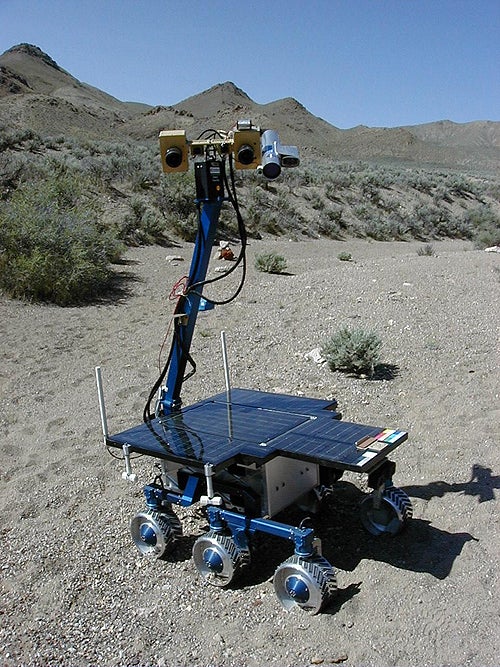Adding to the reality of the simulation, the students, scientists, and engineers stayed back at the Jet Propulsion Laboratory’s “mission control” while the rover was off exploring. The control team wasn’t told exactly where the rover was, and like a NASA version of “Where in the Desert is Carmen Sandiego,” they had to use every clue they could find to learn about FIDO’s location. This simple act of secrecy prevented planetary geologists on the team from using any knowledge they had of FIDO’s “landing site” to make the testing easier. Complicating things further, commands sent to the rover were artificially delayed by 12 to 16 minutes, creating a lag in communications similar to the lag experienced when commands are sent to and from Mars.
Ranging across rocks and hills, this diverse testing-team imaged landscapes, sampled soil, and confirmed that advanced rovers have the potential to bring new clarity to our understanding of Mars. Along the way, their simulations helped to “prove” that water once flowed across the desert. This “discovery” highlights the Mars Exploration Rovers’ ability to find signs of water — and maybe even evidence of life — on the Red Planet.










